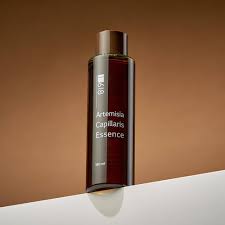Artemisia Capillaris in Skin Care
Artemisia capillaris extract comes from a shrub found abundantly in Asia that has been used as a diuretic, to protect the liver, and to treat skin inflammation.[i],[ii] It has recently been found to be one of the best skin care ingredients to put in melasma creams. What are the benefits and is it safe? That depends on your skin type! Find out if “wormwood” extract is right for your skin type with our free quiz!
Anti-inflammatory, antioxidant, tyrosinase inhibiting and moisturizing properties
AKA “Wormwood” a species native to south Asia.
Not common in skin care yet, but increasingly popular.
What is Artemisia Capillaris?
Artemisia Capillaris is a perennial plant with extract that is becoming popular in skin care. There are over 500 species of the genus Artemisia (of the Astraceae or Compositae family) dispersed throughout the temperate areas of Asia, Europe, and North America.[iii] Various parts of A. capillaris have been used in traditional medicine in Asia for hundreds of years.
If you’re just looking for the best products with artemisia capillaris, here are my favorites:
Active compounds in artemisia capillaris
Flavonoids (e.g., quercetin, luteolin) : These phenolic compounds express strong antioxidant properties, protecting the skin from free radicals and inflammation.
Unique compounds (e.g., capillin, capillene) : These oils have antimicrobial and anti-inflammatory benefits, soothing irritated skin and reducing acne causing bacteria.
Coumarins (e.g., esculetin) : Coumarins stimulate collagen production and inhibit tyrosinase, an enzyme involved in melanin production.
Phenolic acids (e.g., caffeic acid) : These acids have antioxidant properties and anti-inflammatory benefits. They’re also good for soothing redness.
Polysaccharides : They offer moisturizing properties, improving skin hydration and barrier function.
Triterpenoids (e.g., ursolic acid) : These compounds have anti-inflammatory and anti-aging effects, promoting collagen production and improving skin elasticity.
Fatty acids (e.g., linoleic acid) : Essential for maintaining the skin’s lipid barrier, they help in retaining moisture and protecting against environmental factors like pollution, dirt, etc.
Artemisia capillaris benefits
The various compounds in artemisia capillaris make it useful for conditions like:
Dry skin
Eczema
Melasma – it can block pigmentation and inflammation and therefore can act against this pigmentary disorder.
Psoriasis
Rosacea
Skin Aging
Source of Artemisia Capillaris in Skin Care:
Various parts of the shrub Artemisia capillaris (of the Astraceae or Compositae family) native to China, Japan, and Korea, have been used in traditional medicine for hundreds of years.[v],[vi],[vii] Organic forms are likely available.
Safety Issues and Clean Ingredient Standards for Artemisia Capillaris
Artemisia capillaris is generally recognized as safe (GRAS). There are no clean ingredient standards that exclude A. capillaris.
The CIR (Cosmetic Ingredient Review Panel) has graded Artemisia Capillaris (AKA Wormwood) “safe” in skin care formulations.
Environmental impact
Artemisia Capillaris is a sustainable ingredient for use in skin care products. It does not have any particular or unique side-effects on the environment. It does not take a lot of water to grow mugwort and it is fast growing.
Studies on Artemisia Capillaris
Artemisia capillaris limits the expression of tyrosinase-related protein 1 (TYRP-1), which is structurally comparable to tyrosinase. TYRP-1 is involved in eumelanin (the most common form of melanin, including brown and black) synthesis, but not in pheomelanin (responsible for yellowish to reddish tints) synthesis. TYRP-1 is being looked at as a target for treatment of hyperpigmentation disorders such as melasma; therefore, A. capillaris is considered attractive for use in skin-lightening products.
In a 2022 study, A. capillaris was among four essential oil extracts (of 10 studies) to suppress the development of melanin in a B16F10 cell line model.[xiv] Six years earlier, the A. capillaris constituent 4,5-O-dicaffeoylquinic acid significantly and dose-dependently reduced melanin production and tyrosinase activity in melanocytes and decreased the expression of TYRP-1 in mouse cultured cells.[xv]
Conclusion
Artemisia capillaris has long been used in traditional medicine in Asia. It appears to have potential in skin care creams or other products to treat dry skin, eczema, psoriasis, rosacea, melasma, and sensitive skin.
DQH Can I use salicylic acid first and then vitamin C?
It’s easy to create a skincare routine, but knowing how to use it is another thing entirely. In most cases, if you’re not getting the desired skin results, it could be due to the layering of conflicting ingredients. So, is it possible that salicylic acid and vitamin C are such ingredients? Or are these active ingredients the duo that’s been missing from your skincare routine? If you want answers, stick around because today we are going to explain the benefits of salicylic acid and vitamin C and how they can be used in your daily life.
What are the benefits of salicylic acid for skin?
Salicylic acid is one of the most commonly used beta hydroxy acids and is favored by many people with oily, acne-prone skin. This acid is derived from willow bark, and unlike its water-soluble relatives (called alpha-hydroxy acids), salicylic acid is oil-soluble, which means it can penetrate deeper into the lower layers of the skin. Once it reaches the lower layers, it can help unclog pores of excess sebum, dirt, bacteria, debris, and impurities. This results in clearer skin tones and greater definition.
Not only does salicylic acid benefit the underlying layers, but the outer surface of the skin benefits as well. When applied to the skin, salicylic acid removes the buildup of dead skin cells. This is accomplished by breaking the bonds that hold dead cells to the surface. Over time, this can cause the complexion to look dull and prone to acne, blackheads, and other blemishes.
If you’d like to learn more about salicylic acid and how it can improve your skin, check out this dedicated blog post from a beauty insider.
What are the benefits of vitamin C for skin?
Vitamin C is considered one of the most powerful antioxidants, which means it is very effective at fighting free radicals and preventing them from causing further skin damage. Examples of free radicals include pollution, central heating, UV rays and harsh climate. They attack proteins, fats and cell membranes as soon as they come into contact with the skin, causing signs of premature aging such as fine lines and wrinkles as well as hyperpigmentation, flaky patches of skin and loss of elasticity.
Many people usually prefer to use vitamin C in their morning routine as this ingredient gives the complexion a radiant glow. You’ll also find that vitamin C can target areas of hyperpigmentation, plumping the skin and reducing the appearance of fine lines and wrinkles.
The thing about vitamin C is that there are a lot of outdated studies going back to the 1950s that describe vitamin C as an unstable skin component. Thanks to improvements in modern technology, this is no longer the case as all products now contain a stable form of vitamin C.
Visit The Beauty Insider to learn more about vitamin C. So please check out our blog post.
Can I use salicylic acid first and then vitamin C?
Yes, you absolutely can. In fact, it’s thought that using salicylic acid before using vitamin C ensures it penetrates faster and works faster.
This is an efficient way to utilize two power sources, and the reason has to do with pH. For example, the skin’s natural pH is about 4.7, making it slightly acidic. Salicylic acid and vitamin C are also both acidic, and you’ll find that vitamin C is absorbed quickly into the skin. Therefore, using salicylic acid beforehand can increase the acidity of the skin and allow vitamin C to penetrate into the skin faster.
While this is considered an effective way to combine two powerful ingredients, you need to be aware of your skin type and how it reacts to certain active ingredients. Even people with perfect, normal skin can experience skin sensitivity and irritation. Therefore, always consult a doctor or dermatologist before using any new products on your skin.
It’s also important to follow skin application rules. In this case, you need to use the product correctly to ensure you get the best results for your skin. If you’re not sure what I mean, the basic rule for skin is to start with the thinnest consistency and work your way up to the thickest consistency. This prevents a barrier from forming on the surface, preventing other active ingredients from penetrating the skin.
Can I use salicylic acid at night and vitamin C in the morning?
Yes, absolutely, this is considered the most effective way to get returns without any adverse side effects. This is because there is enough time between applications to ensure that the skin’s pH levels return to balance.
You’ll also find that Vitamin C is rich in antioxidants and is perfect for use in the morning to ensure your skin is protected and looking its healthiest. Due to the small size of salicylic acid molecules, it is an acid that is able to reach the deepest parts of the skin. While this is effective at keeping skin clear, it also increases the risk of irritation and photosensitivity. Therefore, many people prefer to use powerful BHAs in their evening routine without exposure to UV rays, pollution, or harsh weather.
Warning: If you avoid using sunscreen every day, none of these ingredients will do what your skin needs. The combination of chemical peels and powerful ingredients increases the risk of further damage to the skin’s surface. Use SPF 50 every day to keep your skin protected and your lipid barrier healthy, even on cloudy days, keeping your skin in top condition.



